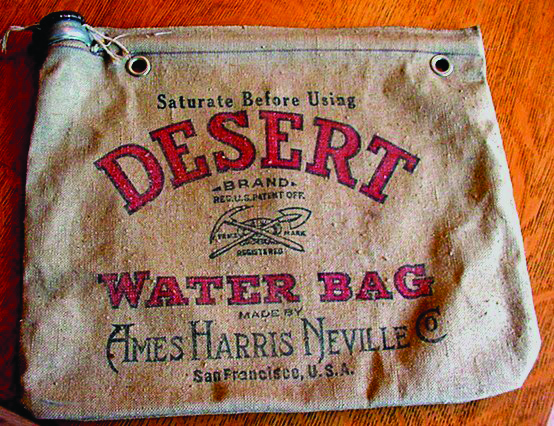In early 1946 when my dad returned home from the Philippines after the end of WWII, he brought with him a treasure trove of neat stuff to fire the imagination of a seven year old. All the right stuff was there for exploring the empty lots in our Long Island (NY) suburban neighborhood: knapsack, pup tent, canteen and mess kit. But the canteen was far and away my favorite, for with it, I was free to roam far beyond the limits of the “run home for a glass of water” range. This sturdy veteran of “The War” was to be my introduction to a wide array of containers needed to keep my body supplied with much needed liquid throughout my entire life.
Be it bucking hay bales in southern Connecticut, trolling for salmon off the Oregon coast, or working in the forests of the Pacific Northwest, most of my jobs required the periodic intake of fluids for re-hydration, re-energizing or for just plain cooling off, yet there were rarely any water faucets, coffee pots, or food marts handy. Ah, but the clever folks at Thermos, Stanley and Coleman always seemed to have just the right container to meet the needs of any job. On several trips through Texas, New Mexico, Arizona, and southern California I made use of an unusual water bag that you just didn’t see in the northern parts of the US. The Desert Brand canvas water bag was designed so that a small amount slowly seeped through the canvas and evaporated as you drove, cooling the remaining water inside the bag. In order to function properly it was hung on the outside of your car. These were seen on almost every auto that traveled the highways of the arid southwest in the ‘50s and served double duty: quench your thirst and/or refill your radiator.
Back then most of the containers that faithfully served those whose jobs took them beyond handy watering holes had several qualities in common: they were reusable, they were durable and they were fairly expensive. This meant that at the end of each day you carried them back home, you washed them out and then the next morning you refilled them. And guess what? You didn’t see them littering the beaches, or the woods or the hay fields. They were investments, you needed them, and so you took care of them, just as you would any other tool used on the job.
Then during the 1990’s, for some inexplicable reason, drinking water sold in disposable plastic bottles became socially fashionable. Seems as if everyone had decided that they were far too busy and far too affluent to be bothered taking that little extra effort needed to use a reusable container and actually fill it with tap water. A Grab & Go, Glug & Toss mentality swept over the land. There are places in this world where bottled water is no doubt a necessity, but that is not the situation in the USA.
Consider theses statistics.
- Americans purchase 50 billion water bottles a year of which 30 billion end up in landfills or as litter.
- Making water bottles out of plastic takes more than 1.5 million barrels of oil, every year. That much oil could fuel 100,000 American cars for a year.
- Each week 1 billion bottles of water are transported in the US. That equals 37,800 semi-trucks hauling water every week.
The only bright spot in these disturbing figures is that sales are on the decline.
Why have so many of us embraced this senseless habit when the vast majority of us are literally surrounded by drinking water available from the tap, drinking fountains or water coolers? It boils down to superb marketing by the likes of Coca Cola, PepsiCo, and Nestle combined with the American consumer’s lack of concern for the consequences of their actions. Interestingly, these are the very same reasons that also made cigarette smoking a socially fashionable habit in the 1940s, ‘50s and ‘60s and caused so much human suffering.
With so many challenging and complicated problems facing us all as we move into the 21st century, it is nice to know that at least the bottled water issue has a very simple solution.




One Comment
Crysta Watson
Oh Great!!
Thanks for sharing such an awesome article with us.
Really informative post!!
Nowadays, I am using faucet face stainless steel bottles for daily usage.